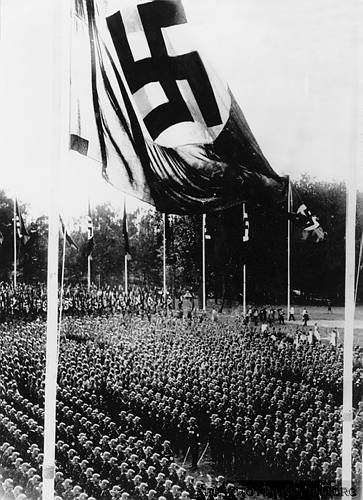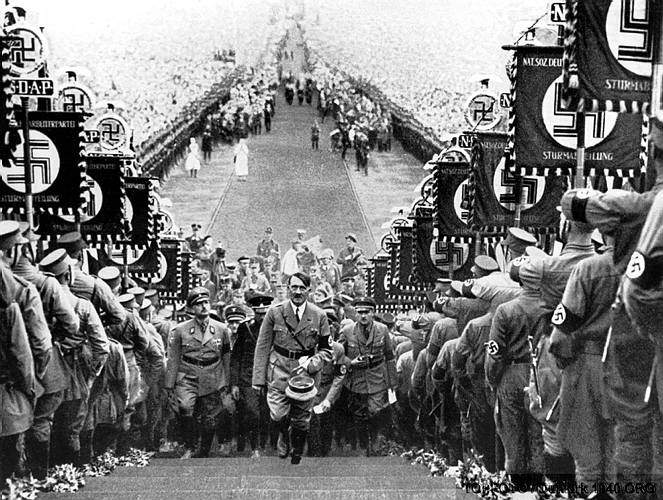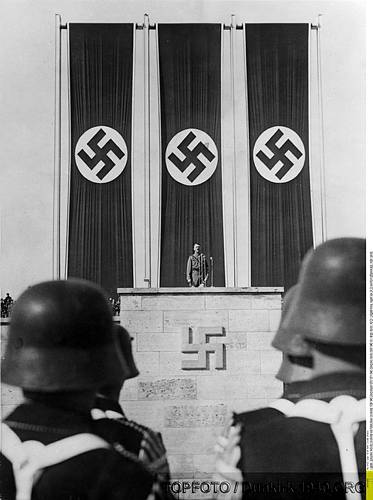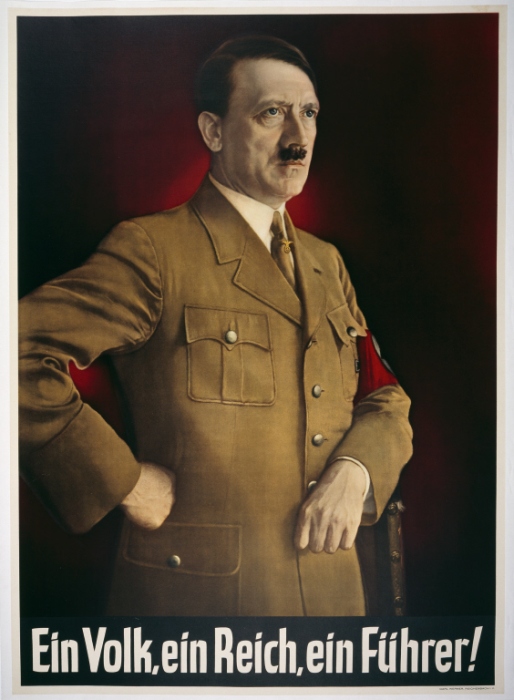
Nationalsozialistische Deutsche Arbeiterpartei (Nazi Party) membership Lapel badge.
After unification, Germany was emerging as the dominant economic power of Europe and had she not blinked first in 1914, would have continued to grow economically and become a super power. The unification created the German Empire; while the country was ruled from Berlin under the leadership of the Kaiser, the various states retained their old ruling nobility. It would, however, given the Prussian obsession with all things militaristic, be extremely naive to imagine that, had WW1 been avoided in 1914, this new super power and its territorial ambitions around the globe would not have placed it into a head-on conflict with the British Empire.
By October 1914, the momentum of conflict rapidly began to stall and became a stalemate of the trenches. By 1916 and the meat mincer that was Verdun, the full horror of the modern war was clear for all to see and the ordinary German soldier was beginning to become disillusioned. Due to its geography and with war being raged on two fronts, those at home began to suffer shortages as well. Both influences would go on to radicalise civilian and military populations, with those on the front line increasingly seeing their lack of progress as a direct result of those at home and the civilians viewing the military as responsible for their continued suffering. In November of 1918, the returning soldiers and the civilians once again met and while not exclusively the case, the nature of the radicalisation manifested itself in two opposed movements, Germany was thus now a country not only broken, but a powder keg merely awaiting the fuse to be lit. The Freikorps (well-trained, angry ex-soldiers) and the communists clashed openly on the streets of various cities.

The treaty of Versailles in 1919 added further pressure to the situation and so the door was open for anyone who could gather enough popular support, to exploit the situation. As is often the case in such times, the politics of fear and envy are ones which allow for anyone motivated and organised enough to exploit them to their own end.
The Nazis were just one of many far-right groups which existed post-WW1, but under the leadership of Hitler, they managed to engage the public sufficiently by means of direct engagement in the political process, combined with good old-fashioned street thuggery, to rise to the top of the pile, absorbing many of the other right-wing movements on the way to power. The communists naturally did everything they could to oppose the rise of the right and the ordinary German stuck amid this all watched on, while many supported the Nazis on the basis of removing the threat from the left with the view of then in turn putting the Nazis into their place. This as we know, is a dangerous game to play and as history demonstrated, one which will almost certainly deliver the desired result initially, followed by undesirable consequences.

The Nazis appeared to offer solutions to the problems that Germans found themselves dealing with. These were largely real, although those the Nazis blamed were far from being the cause. Once in power, Hitler created a cult of personality around himself and the Party went on to infiltrate and influence every facet of public life.
'One People, One State, One Leader! '
By 1939, Germany was a police state ruled by one unquestioned leader with a single Party controlling everything. Under such conditions, the worst excesses of the leaders' twisted desires could be fully enacted without fear of reprisals. As with all types of state, when the people are told often enough who to blame, they will not only embrace the hate but likewise care little for the fate of anyone who falls foul of the system.
The images here depict scenes from the Nazi Party rallies held at Nuremberg in the 1930's.
